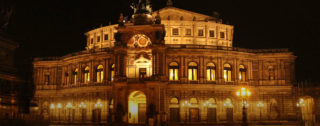German language facts
Sprechen Sie Deutsch? In today’s business, a positive answer to this question is getting vital. Nowadays, over 100 million people speak German (Deutsch) as their native language. German is the official language of Germany, Austria, and Liechtenstein and one of the four national languages of Switzerland.
German is also spoken in diverse modern dialects in northern Italy, eastern France (Alsace and parts of Lorraine), as well as parts of Belgium and Luxembourg.
The language of Beethoven, Mozart, Freud, Nietzsche and Einstein, German is second only to English in the field of scientific publications. Forty per cent of scientists in the US recommend that their students learn German. In Poland and Hungary the figure is over 70%.
Germany is the most powerful economy in Europe and the third largest industrial nation in the world. It also, folows that german language services are commonly used in many countries.
Roots of German language
Low and High German
German departed from the Germanic branch of the Indo-European language (which includes English, Dutch, Scandinavian and the now extinct Gothic) by a shift in sounds called the Second Germanic Sound Shift. Its effect can still be seen by comparing modern German words with their English cognates: pound>Pfund; pipe>Pfeife; hope>hoffen; apple>Apfel, etc.
The Second Sound Shift divides Germany into a smaller Northern part (without the sound shift) and a larger central and Southern part (with the sound shift). Since the part of Germany where there was no Second Sound Shift are the North German Lowlands, their language is called Low German as distinct from High German.
German comes in many dialects which are in general not mutually intelligible: Dutch and its Belgian variety Flemish are official languages in the Netherlands and in Belgium (they are closely related to the Low German languages of Germany’s North); Afrikaans which developed out of the Dutch spoken by Dutch settlers is an official language in South Africa; Luxembourgish (from High German) is an official language in Luxembourg and Yiddish, which developed out of Middle High German dialects and is now spoken by several million Jews throughout the world.
Old, Middle and Modern German
Historically, German falls into three main periods: Old German (c. AD 750-c.AD 1050); Middle German (c.1050-c.1500); and Modern German (c.1500 to the present). The earliest existing records in German date back to about AD 750. In this first period, local dialects were used in writing, and there was no standard language. In the middle period a relatively uniform written language developed in government after the various chancelleries of the Holy Roman Empire began, in the 14th cent., to use a combination of certain dialects of Middle High German in place of the Latin, that until then, had dominated official writings.
The German of the chancellery of Saxony was adapted by Martin Luther for his translation of the Bible. He chose it because at that time the language of the chancelleries alone stood out as a norm in a multitude of dialects, and Luther thought he could reach many more people through it.
The modern period is usually said to begin with the German used by Luther, which became the basis of Modern High German, or modern standard German. The spread of uniformity in written German was also helped by printers, who, like Luther, wanted to attract as many readers as possible.
During the 18th cent, a number of outstanding writers gave modern standard German essentially the form it has today. It is now the language of church and state, education and literature. A corresponding norm for spoken High German, influenced by the written standard, is used in education, the theatre, and broadcasting.
Although dialectal differences within both the High German and Low German regions remain, a trend toward uniformity in the direction of the written standard is expected partly as a result of widespread broadcasting, diminishing isolation, and increased socio-economic mobility.
Contact Us
Click here to get in touchCopyright Notice:
Third parties are allowed to use or reference information on this page for non-commercial use only if they acknowledge this website as the source by linking to it.
Read detailed Terms and Conditions on how to apply for commercial use.











